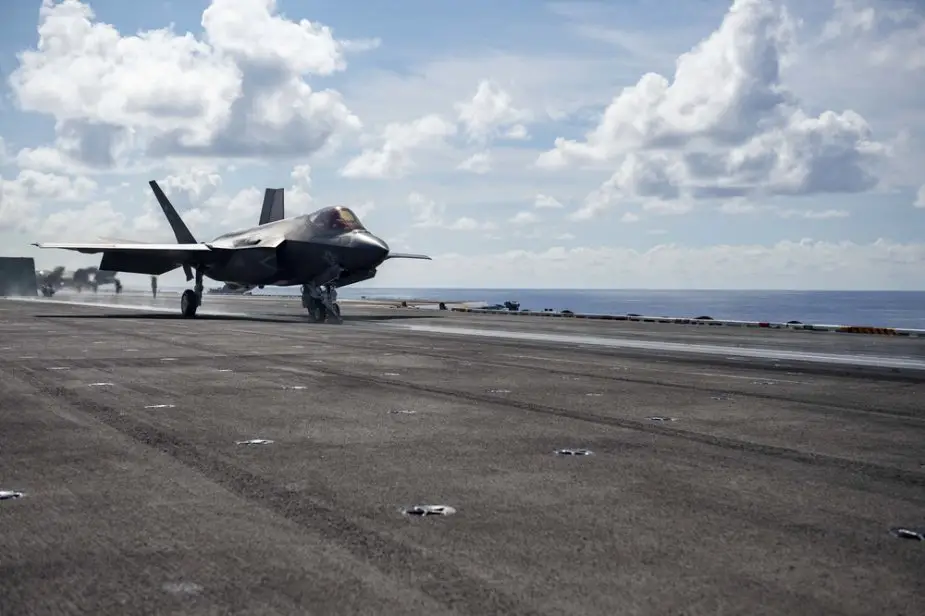Breaking news
UK Carrier Strike Group conduct joint F-35 missions with US and Korea.
According to information published by the Royal Navy on September 3, 2021, jet squadrons flying from aircraft carriers HMS Queen Elizabeth and USS Carl Vinson have flown together during joint exercises over the Pacific Ocean.
Follow Navy Recognition on Google News at this link
 An F-35C Lightning II, launches off the flight deck aboard Nimitz-class aircraft carrier USS Carl Vinson CVN 70 (Picture source: U.S. Department of Defense)
An F-35C Lightning II, launches off the flight deck aboard Nimitz-class aircraft carrier USS Carl Vinson CVN 70 (Picture source: U.S. Department of Defense)
The Carrier Strike Group with HMS Queen Elizabeth at its heart are currently deep into the Indo-Pacific leg of their seven-month deployment that has taken them across the globe working with allies and partners in the Atlantic, Mediterranean, Indian Ocean and into the Pacific.
Their latest foray has seen them work alongside ships from the Republic of Korea Navy during three days of events near Busan, which included joint maritime manoeuvres, with Commander of the UK Carrier Strike Group, Commodore Steve Moorhouse.
Prior to that, though, the USS Carl Vinson and HMS Queen Elizabeth’s air wings put on an impressive display of air power, as jets from the carriers trained to work seamlessly together by practising techniques, tactics and procedures, which included mid-air refuelling.
It’s the first time the US and UK carrier strike groups have worked together and it saw the two F-35B Lightning jet squadrons from Queen Elizabeth work closely with four F-35C Lightnings, five F/A-18 E/F Super Hornets, two EA-18G Growlers and a E-2D Advanced Hawkeye from USS Carl Vinson.
UK Carrier Strike Group has interacted with the ‘C’ model of the F-35 jet, which is intended for catapult launches from aircraft carriers opposed to the short take-off and vertical landing versions that HMS Queen Elizabeth operates.
The Carrier Strike Group then looked to the Korean peninsula and exercises with the Republic of Korea Navy.
The F-35B Short take-off and landing is the first aircraft in history to combine stealth with short takeoff/vertical landing capability and supersonic speed. This distinction gives the F-35B the unique ability to operate from small ships, roads and austere bases.
The F-35B STOVL is powered by Rolls-Royce patented shaft-driven LiftFan® propulsion system and an engine that can swivel 90 degrees when in short takeoff/vertical landing mode. Because of the LiftFan®, the STOVL variant has a smaller internal weapon bay and less internal fuel capacity than the F-35A. It uses the probe-and-drogue method of aerial refueling.
The F-35C variant is designed for catapult-assisted take-off but arrested recovery operations from aircraft carriers. Compared to the F-35A, the F-35C features larger wings with foldable wingtip sections, larger control surfaces for improved low-speed control, stronger landing gear for the stresses of carrier arrested landings, a twin-wheel nose gear, and a stronger tailhook for use with carrier arrestor cables. The larger wing area allows for decreased landing speed while increasing both range and payload. The F-35C is limited to 7.5 g.


























